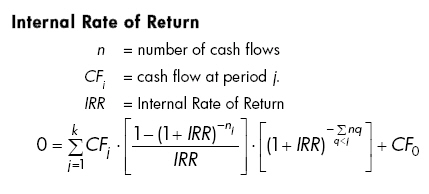There are various modes of investments in mutual funds available. However, investing in mutual funds through systematic investment plans (SIPs) is the most considered avenue of all.
One major reason being, SIP helps to tackle the market volatility better. Investors can buy more units when there is volume gain and fewer when the value rises. Amidst, all this there is one question that every investor ponders upon: How are SIP returns calculated?
It is an easy task to calculate returns when lump sum investments are made. As the entry and exit of the investment is defined, along with the expected returns. However, when it comes to SIP, where the exit date is confirmed, but there are multiple investments made at different intervals.
In such case, internal rate of return or IRR method is of great help. IRR is useful not only for SIP returns but also for estimating returns from money back insurance policies and bond yields. This calculation method equates the discounted value of the stream of investments (also known as cash outflows) to the discounted exit value of the investment (cash inflows). The discount rate that equates the present value of cash out flows and the present value of cash inflows is the rate of return earned by an SIP.
What is IRR?
IRR or internal rate of return
Internal rate of return (IRR) is the interest rate at which the net present value of all the cash flows (both positive and negative) from a project or investment equal zero.
Internal rate of return is used to evaluate the attractiveness of a project or investment. If the IRR of a new project exceeds a company’s required rate of return, that project is desirable. If IRR falls below the required rate of return, the project should be rejected.




